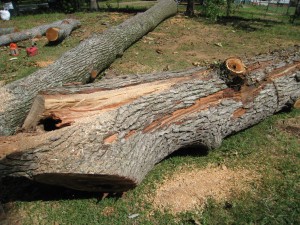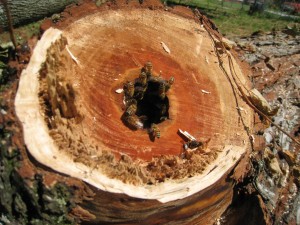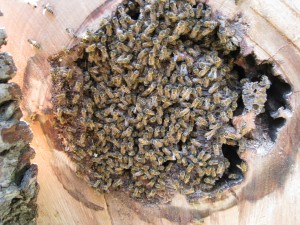Man Dies of Bee Stings
An article popped up on my Google Alerts today about an Africanized Honey Bee Hive killing a man in California. It’s a real tragedy and my prayers go out to the man’s family. Hopefully they will find peace.
But, this event highlights the ongoing issue with the Africanized Honey Bee (AHB.) Several decades ago, a well-respected (internationally) beekeeper in South America began to observe the AHB and recognized several positive traits in that bee which he thought would be very desirable in his bees back home. The AHB is a fiesty creature. It has evolved in an environment that will go from a lush, wetland full of blooming plants to a desolate, dry land where everything is sleeping (waiting for the next downpour, which may be months away!) As a honey bee, one cannot live for months without nectar and pollen, so this bee developed a couple of traits to help it through this.
Primarily, the AHB can pick up shop and move at a moment’s notice. If this area is dry, it might be time to head many dozens of miles to a new spot where blooms still exist. To complement this, they build up comb very quickly. If you are moving around a lot, you need to be able to build up a place to hatch new bees and store honey quickly. Finally, since they move around a lot, they really do not put honey away to any great extent (if you might be moving next month, there is no need to store up a bunch of honey for the long haul.) These bees do not have our winters, so they simply never needed to store a lot of honey.
Finally, and most importantly, the AHB has a ton of predators that roam the landscape in Africa. Most of these predators are looking to get at the bee’s honey. Over time (thousands of years), the bees that were the nastiest/meanest were the bees that survived. If you could really put a good stinging on a possible honey theft – enough to get them to leave – your hive’s genes had a much greater chance to make it to the next generation. As time went out, the AHB became the meanest little bee in town.
But, there are a lot of Africans that are very successful beekeepers with this nasty bee. As you would imagine, they have worked to keep (and breed) those hives which absconded (picked up shop and left) less, stored more honey then normal and were not as mean. An insect evolves quickly (anyone doubting this has only to look at how quickly the varroa mite evolved to resist the treatments that came out only a decade ago.) It did not take the African beekeeper long to breed a very nice bee that built up much quicker then the European bee (honey-wise), but was missing many of the negative traits of the AHB.
This all sounds good, eh? But, why all the uproar about the AHB? Well, this researcher/beekeeper from South America went to many Apiaries and retrieved only the best queens. He sent them, by the hundreds, back to South America. This bee, when mixed with the European Bee, would be the answer to everyone’s prayers. But, things would not go as planned.
Of the hundreds of bees that were sent back to South America, only a handful (literally) survived. Instead of picking up a large gene pool, a very small sub-set arrived and survived in South America. In no time at all, a few (for all we know, only one – which would imply that all of North America’s AHB’s are descended from this one queen) absconded and intermixed with the local population. The bees spread and the rest is history, with the bees arriving in the southern part of the United States and causing all kinds of problems (and tragedies, born out by the headliner of this post.)
Now, these bees are killed on sight. Some beekeepers try to retrieve them, but requeen them immediately. Think about that. Someone actually catches an AHB (maybe this one has a gentle queen?), but they immediately kill the gene pool and replace it with a European queen. Now, if that hive had been really mean, making it impossible to catch before they absconded, that gene pool would remain in the wild. Thus, Natural Selection all but demands that the AHB remain mean (and get meaner) and abscond quickly here in North America. But, that’s the state of things today. I believe tomorrow will be a different beast.
Within my lifetime, I expect Africanized bees to be in Virginia. I believe they will continue to intermix with the European honey bee and that the Africanized strain will far outperform (and eventually overcome) the European strain in the wild (except, maybe, far up North – that will be my child’s lifetime.) But, am I worried? Not at all. I believe that this is a good thing. The AHB has a huge resistance to many of the problems that ail the European Bees of today. They also have good traits. The problem of today is the bad traits, but I honestly believe that we will one day learn to live with them (even embrace them) and be proud to have hives with that gene pool. We started out with the genetic trash of a handful of bees from Africa (or maybe just 1 queen.) Mother Nature has her way and we will, one day, end up with a superior bee. I believe that bee will have a good many genes from that 1 nasty queen that came out of South America.



